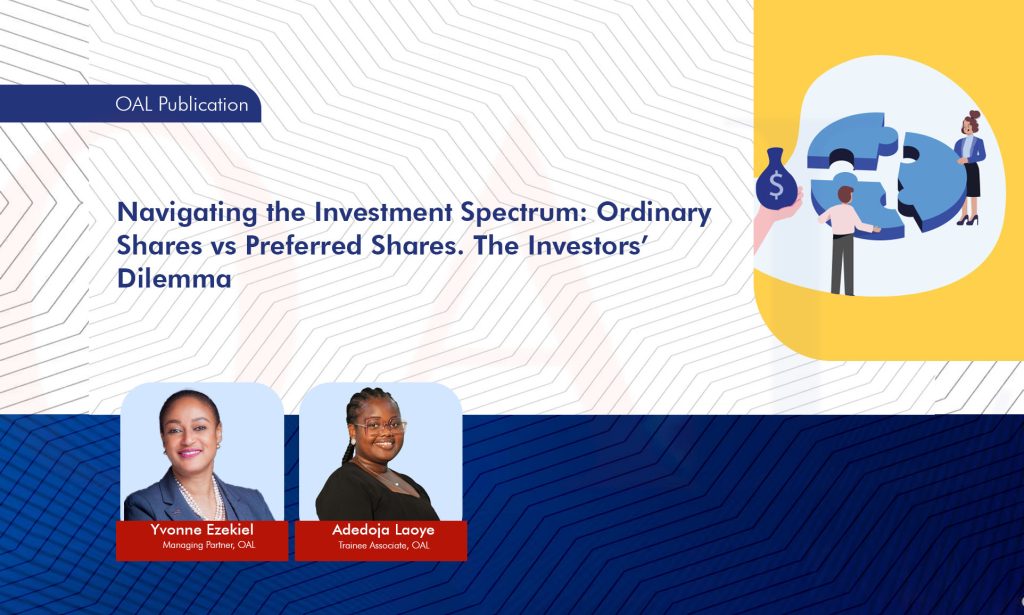In the seemingly complicated world of finance, there are several means for an investor to own a stake in a company, one of which is through share acquisition. Shares play a very crucial role as one of the primary instruments for investment. A share, sometimes referred to as a stock, represents ownership in a company and provides individuals with a part of its assets and by extension, its potential profits. Aspiring investors have to navigate the dynamic landscape of shares, where various types and classes of stocks exist, each with distinct characteristics and implications.
From the perspective of a company issuing shares, it is a means to raise capital.
Understanding the intricacies of shares and their differences, however subtle, is not only essential for those seeking to grow their wealth but also for anyone intrigued by the mechanisms that drive modern business economies and their markets.
It is important to clearly define what a share is and who a shareholder is for the avoidance of doubt.
A share, also known as a stock, is a unit of equity ownership in a company, basically an ownership stake in a company, while a shareholder is a person who owns shares in a company. A shareholder essentially owns a portion of that company and ordinarily has the potential to benefit from the company’s profits and growth, as well as to participate in certain decision-making processes through voting rights. Therefore for the organization seeking to issue shares and the investors seeking to acquire shares, the dilemma typically faced is on the type of shares to issue or acquire, commonly ordinary shares or preferred shares as each class of shares comes with its features.
Also read: Understanding Different Types Of Employment Arrangements
We will now examine the similarities, differences, benefits and cons of issuing or acquiring ordinary shares and preferred shares.
ORDINARY SHARES Vs PREFERRED SHARES:
-
VOTING RIGHTS:
These are rights conferred on the shareholder by virtue of shares acquired, to vote on key matters or decisions of a company. Upon acquiring shares in a company, the shareholder automatically has the privilege of participating in certain decisions related to the company’s operations and management. This is usually done through the process of voting during shareholder meetings. Typically, the number of votes a shareholder has is generally determined by the number of shares they hold. Prior to the enactment of the Companies and Allied Matters Act (CAMA) in 2020, preferred shareholders generally did not have voting rights. Preferred shares were usually held by investors who sought a fixed dividend payment and priority in receiving assets in case of liquidation. However, Section 140 of CAMA 2020 abolished the concept of non-voting shares. All these were highlighted to show that both ordinary and preferred shares carry voting rights. The difference however is that while ordinary shares give their shareholders the right to only one vote per share, preferred shares can per Section 168 of CAMA 2020 carry more than one vote per share depending on the article of the company.
-
DIVIDENDS:
Dividends are payments made by a company to its shareholders out of its profits. Ordinary shareholders MAY receive dividends. Dividend payments to ordinary shareholders are subject to the company’s financial performance and the board of directors’ discretion. Preferred shareholders however have a higher claim on the company’s profits compared to ordinary shareholders. They enjoy priority and are typically entitled to their dividend or percentage of the company’s profits before any dividends are paid to ordinary shareholders. This priority entitles preferred shareholders to what is called cumulative dividends. It is however important to note that the dividend of a Preferred shareholder is fixed. This means that even though the company has a successful or profitable financial year Preferred shareholders are not entitled to any part of the said profit. They are only entitled to the fixed dividend as agreed at the beginning of the investment. Whereas, the ordinary shareholder gets to enjoy the excess profit whenever declared by the company
-
CUMULATIVE AND NON-CUMULATIVE DIVIDENDS:
Ordinary shareholders only receive dividends upon profit declaration by the company. Where dividends are not declared in a year, it does not accumulate over the period of time where dividends were not paid. Preferred shares can have either cumulative or non-cumulative dividend features. Companies, by virtue of provisions in their Article of Association, typically determine when a share can be cumulative and when a share will be non-cumulative. In some companies, where the article of association provides for such, cumulative preferred shares accumulate unpaid dividends if the company fails to pay them in a given period. This simply means that if profits are not declared or paid out in a particular period, the unpaid dividends accumulate and must be paid out to preferred shareholders before common shareholders receive any dividends in the future. Non-cumulative preferred shares have similar features to ordinary shares as they do not accumulate unpaid dividends and may lose their right to receive them if not paid within the specific period.
-
AMOUNT OF DIVIDEND PAYMENTS:
When dividends are declared, ordinary shareholders are the last set of persons to be paid. The amount paid will differ from one month to another depending on the profits declared by the company. Preferred shares on the other hand, often have a fixed dividend rate specified at the time of issuance. The dividend is usually expressed at a percentage based on the face value or par value of the shares. Unlike ordinary shareholders, preferred shareholders typically receive their dividends before ordinary shareholders receive theirs, and the dividend amount is predetermined and unchanging throughout the duration of that investment.
-
POSSIBILITY OF CAPITAL APPRECIATION:
Ordinary shareholders are entitled to the balance of the distributable profits. They enjoy unrestricted right to participate in the surplus profit of the company whenever the company declares a much higher profit margin. In this case, however, preferred shares generally have less potential for capital appreciation. Their value is less influenced by changes in the company’s performance
-
FLEXIBILITY IN ISSUING SHARES:
Ordinary shareholders are referred to as the burden bearers of the company therefore, companies have more flexibility in issuing ordinary shares compared to preferred shares. They can issue different classes of ordinary shares with varying rights and privileges to meet specific financing or ownership needs. On the other hand, there are however standardized terms and conditions that ought to be followed and stated before preferred shares are issued. For instance, the prospectus requirements for the issuance of a preferred share are more elaborate and exhaustive for issuing preferred shares than ordinary shares as companies are required by Law to thoroughly lay out the features of the shares to potential investors. Also, the requirements for approval prior to the issuance of preferred shares have more stringent regulatory requirements than the requirements for Ordinary shares. There are also different listing requirements for preferred shares and ordinary shares on stock exchanges depending on the liquidity and trading volume of each type of share. Although these extra measures in place are to ensure that investors make informed decisions when making investments, These measures make issuing Ordinary shares more flexible and attractive to companies seeking investment.
ORDINARY OR PREFERENCE SHARES: THE PERFECT INVESTMENT?
As stated in the earlier part of this article, each type of shares brings a unique set of advantages to the table, catering to the diverse preferences and risk tolerances of investors. Therefore in determining what type of share(s) to invest in, one must think about the exact purpose for the investment.
If it is the case that the Investor seeks to control, then he could be advised that it would be in his interest if he gets more ordinary shares in the company unless the article of the company allows preferred shares to be weighted (i.e. to carry more than one vote in a decision-making process). If preferred shares are weighted, and the investor seeks greater voting power for a specific period of time, then he could ply the route of preferred shares instead of ordinary shares.
If the investor simply seeks stability with regards to income, he should get Preferred shares, because as earlier established whether or not there is enough dividend to go round, preferred shareholders get priority upon declaration of dividend by the company. The investor may insist that his shares be cumulative; such that whether or not profits are declared, the fixed amount has to be paid.
Conclusion
Whether an investor chooses to opt for the ordinary or preferred share, each type of shares have their merits and demerits and understanding the nuances of these differences empowers them to make informed decisions considering the diversity in the capital market.
Authors






